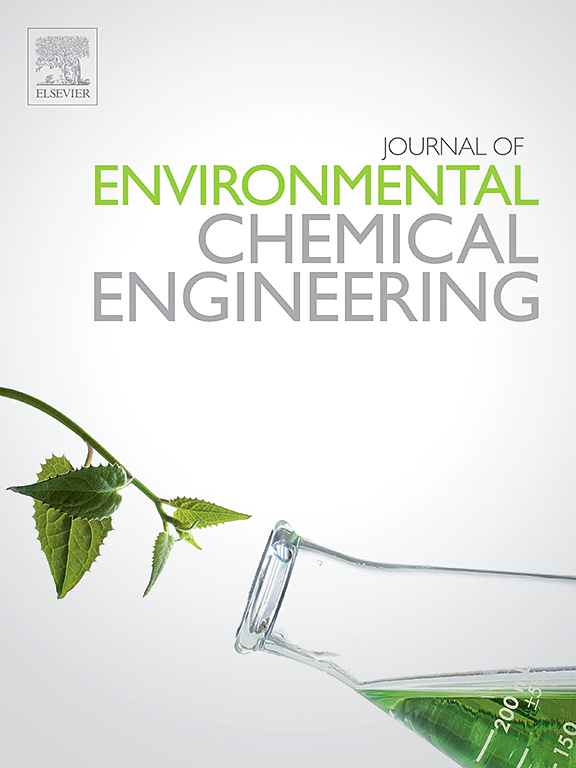The impact of chloride and nitrogenous ions on advanced oxidation processes: Radical formation, pollutant removal, transformation products, and toxicity changes
IF 7.2
2区 工程技术
Q1 ENGINEERING, CHEMICAL
引用次数: 0
Abstract
Advanced oxidation processes (AOPs) have emerged as a promising technology for the removal of contaminants in water treatment. AOPs generate highly oxidative radicals, such as •OH and SO4•−, and many past studies have demonstrated that inorganic ions (e.g., chloride, nitrate, nitrite, and ammonium) in water can react with these radicals to form reactive chlorine species (RCS) or reactive nitrogen species (RNS). These species are involved in pollutant degradation and can affect the formation of toxic byproducts, leading to potential environmental risks. In this review, we summarize the formation pathways of RCS and RNS and the role of chloride and nitrogenous ions in AOPs and compare the effects of chloride and nitrogenous ions on the degradation rate and mineralization efficiency of pollutants. The effects of these ions are influenced by various factors, including the initial concentration of the ions, structure of the pollutant, type of oxidant, pH, and wavelength of the light. Furthermore, we discuss the formation pathways of chlorination or nitration products in the presence of chloride ions and nitrogenous ions. Most chlorination products are more toxic than their parent pollutants, whereas approximately 50 % of nitration or nitrosation products were more toxic than their parent compounds and 50 % were less toxic
氯离子和氮离子对高级氧化过程的影响:自由基形成、污染物去除、转化产物和毒性变化
高级氧化工艺(AOPs)已成为水处理中去除污染物的一种有前途的技术。AOPs产生高度氧化的自由基,如•OH和SO4•−,过去的许多研究表明,水中的无机离子(如氯化物、硝酸盐、亚硝酸盐和铵)可以与这些自由基反应形成活性氯种(RCS)或活性氮种(RNS)。这些物种参与污染物的降解,并能影响有毒副产物的形成,导致潜在的环境风险。本文综述了RCS和RNS的形成途径以及氯离子和氮离子在AOPs中的作用,并比较了氯离子和氮离子对污染物降解速率和矿化效率的影响。这些离子的作用受到各种因素的影响,包括离子的初始浓度、污染物的结构、氧化剂的类型、pH值和光的波长。此外,我们还讨论了氯离子和氮离子存在下的氯化或硝化产物的形成途径。大多数氯化产物比其母体污染物毒性更大,而大约50% %的硝化或亚硝化产物比其母体化合物毒性更大,50% %的毒性更小
本文章由计算机程序翻译,如有差异,请以英文原文为准。
求助全文
约1分钟内获得全文
求助全文
来源期刊

Journal of Environmental Chemical Engineering
Environmental Science-Pollution
CiteScore
11.40
自引率
6.50%
发文量
2017
审稿时长
27 days
期刊介绍:
The Journal of Environmental Chemical Engineering (JECE) serves as a platform for the dissemination of original and innovative research focusing on the advancement of environmentally-friendly, sustainable technologies. JECE emphasizes the transition towards a carbon-neutral circular economy and a self-sufficient bio-based economy. Topics covered include soil, water, wastewater, and air decontamination; pollution monitoring, prevention, and control; advanced analytics, sensors, impact and risk assessment methodologies in environmental chemical engineering; resource recovery (water, nutrients, materials, energy); industrial ecology; valorization of waste streams; waste management (including e-waste); climate-water-energy-food nexus; novel materials for environmental, chemical, and energy applications; sustainability and environmental safety; water digitalization, water data science, and machine learning; process integration and intensification; recent developments in green chemistry for synthesis, catalysis, and energy; and original research on contaminants of emerging concern, persistent chemicals, and priority substances, including microplastics, nanoplastics, nanomaterials, micropollutants, antimicrobial resistance genes, and emerging pathogens (viruses, bacteria, parasites) of environmental significance.
 求助内容:
求助内容: 应助结果提醒方式:
应助结果提醒方式:


